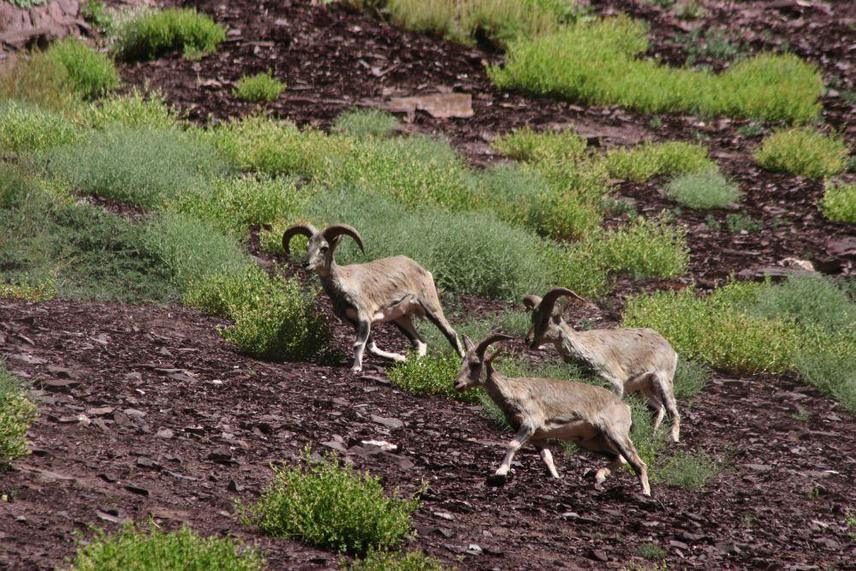Tsewang Namgail
The aim of my project is to determine the relative vulnerability of three mountain ungulates by studying their diet use in relation to that of the livestock.

A herd of blue sheep moving across a slope.
The Trans-Himalayan region of Ladakh, India, is geographically unique and provides a range of habitats for wild animals. Thus, it harbours a rich assemblage of wild mountain ungulates of global conservation importance.
Commonly referred to as the ‘mountain monarchs’, this includes majestic species like the Asiatic ibex Capra ibex siberica and Ladakh urial Ovis v. vignei. Apart from being aesthetically and economically important, these ungulates represent an important genetic resource for the improvement of livestock breeds in future.
However, the population of many of these native herbivores continue to decline largely due to rangeland deterioration associated with excessive livestock grazing. Owing to the fact that livestock production is the mainstay of the economy, the livestock population in several parts of the region have increased almost two-fold in the last two decades, and continue to increase apace.
The Ladakh region is a important centre of cashmere wool production in India, and there is a major emphasis on increasing the wool production due to an increased demand for it internationally. Therefore, the native people of the region tend to increase the livestock population beyond the carrying capacity of the rangelands.
In order to harmonize the objectives of pastoral production and wildlife conservation, it is critical to identify the mountain ungulate species that can co-exist alongside domestic livestock, and species that will require specific conservation intervention. To assist in appropriate conservation management and prudent conservation resource allocation, it is critical to evaluate the differential vulnerability of species, and conversely, their conservation potential under multiple rangeland use (livestock grazing), which can be determined by examining the dietary relationships between these wild and domestic ungulates.
The aim of my project is to determine the relative vulnerability of three mountain ungulates: Ladakh urial, Asiatic ibex and blue sheep Pseudois nayaur to livestock grazing by studying their diet use in relation to that of the livestock (the predominant sheep and goats). The results of this study will be critical in designing participatory conservation and rangeland management programmes.